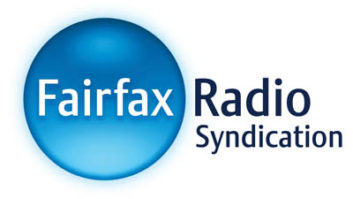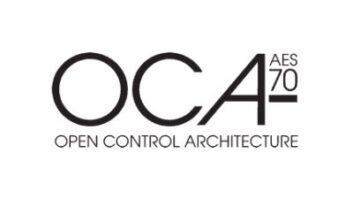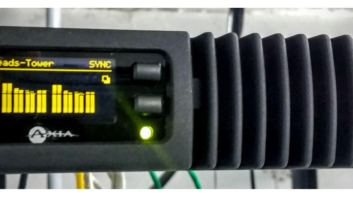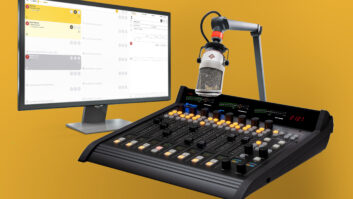Program syndication has long been an attractive service for radio stations in search of unique or different content.
Whether designed to attract new listeners, advertisers or simply strengthen a schedule, syndication is an ideal way for a radio station to deliver important and/or entertaining programming to the audience.
The delivery of syndicated programming has migrated from hard copy (tapes, LPs and CDs) to satellite- and Internet-based distribution systems, with the latter allowing radio broadcasters to migrate to a file-based workflow.
The rise of the Internet for program distribution has been especially valuable for radio networks from a cost perspective, allowing networks to distribute programs to affiliates as MP3 files via FTP transfer.

Johannes G. Rietschel The radio station or affiliate at the receiving end may find that while a syndicated program is pertinent to its region, the issue of local advertising during the program presents a challenge.
Local cut-ins
Networks or contributors delivering live feeds via satellite, ISDN or other means must also transmit triggers or contact closures that allow local stations to “cut-in” and interrupt the stream in favor of local ads, IDs or programming such as news, traffic and weather.
Contact closures essentially are data signals that automatically switch a service on or off. In syndicated radio, these contact closures are what often enable local stations to maintain a local feel and presence by inserting station identifications, local public-service announcements, advertisements and perhaps news or other programming into the syndicated program stream.
The challenge of distributing contact closures via satellite or another transport service is related to capacity, control and reliability.
In terms of capacity and control, the number of contact closures that can be transmitted to a given station is dependent on what the receiving station can handle. Typically, an affiliate will use a switching system or other physical interface that can accept a limited number of incoming closures for local cut-ins. Operator intervention is often required, and there is little room for fine-tuning on the fly.
Reliability is dependent on the quality of the connection, and this is more of a concern from the contributing side.
Satellite delivery is a proven method, but not without its deficiencies. Dropouts can occur, typically weather-related, but the bigger issue with satellite is cost.
The cost of satellite delivery becomes less of burden as the number of affiliates rise, but it can be cost-prohibitive for a network or contributing service transmitting to, for example, 10 radio stations across a country or even across national boundaries.
A radio station could opt to deliver programming via ISDN to help reduce costs, but the trade-off is inferior signal quality and high cost for the leased lines. And then there is the issue of how to reliably transmit triggers or contact closures over a less reliable transport medium, as well as the cost of the equipment and operator intervention required to accomplish the task.
Audio over IP
The reputation of audio over IP as a reliable, cost-effective and diverse transport method for broadcast radio has risen in recent years. Radio stations around the world have incorporated audio over IP for a variety of applications including studio-to-transmitter delivery, remote program pickup, confidence monitoring and Internet program distribution.
Barix, a Swiss audio over IP company, has developed a new localized ad insertion solution with two partners: StreamGuys, a content delivery network that is a leading provider of internet radio streaming services, and MOH Technologies, developer of a new software solution called Adiosys that is a key enabler of the application.
At its core, the solution employs a hosted, server-based architecture that both contributing services and receiving stations can use to upload local content for playout at very specific times within local content windows.
StreamGuys provides an intuitive interface to upload files (ads, stations IDs, etc.) and to assign those files for playout at the appropriate affiliate(s). To trigger the replacement of the stream content with local content, either “closure-like” in-stream triggers or a browser-based interface can be used. The Adiosys software reacts on the commands for local content and inserts the files relevant for that specific ad window on a per-location basis.
A Barix Exstreamer IP audio device at the affiliate location receives and decodes the finished, “localized” stream — no local copy of content, ads, station IDs or the like is required. However, in case of a complete system or network failure, the Exstreamer can trigger a local backup feed or play out backup content from a USB flash drive.
There are a number of technical advantages to this service for both the contributing service and the station affiliates.
The need to deploy and setup the server architecture is eliminated as StreamGuys integrates the software and hosts the service. Those using the system need only familiarize themselves with the front-end GUI, which provides a series of buttons and menus to set up receiving locations, and to upload and schedule ads, IDs and other files.
Unique address
Reliability in playback is another merit. The setup process creates a unique address for each receiving location, ensuring that the Adiosys software is exclusively assigned to a Barix Exstreamer at each affiliate. This ensures that the right ads are always played back at the right affiliates at the right times. Due to device identification by Adiosys, the stream can only be received by legal, contracted affiliates.
Signal latency is also minimized in comparison to satellite and other delivery methods. The audio source > StreamGuys server > affiliate’s Barix Exstreamer path uses Barix’s unique implementation of the real-time protocol (RTP) standard. Within this chain, the signal delay can be as low as 200–500 milliseconds, depending on the network connections. This extremely low latency is ideal for broadcast radio and an attractive benefit for both management and engineering.
Capacity is also unlimited in terms of the number of browser triggers or contact closures that can be distributed to any one location. The server, which realistically can be located anywhere on the planet, eliminates the legacy switching device required for delivering contact closures over other distribution platforms, as well as the local playback device.
This provides far more flexibility in scheduling and fine-tuning then being forced to work with just a handful of contact closures in a limited window of time.
No content needs to be sent or uploaded to the affiliates/playout stations. Whatever limitations were a reality with a legacy system no longer exist in the IP environment.
The reduction in equipment costs and footprint at the receiving end — just a single compact, low-cost, low-power Exstreamer is required — also essentially eliminates the need for a live operator at the receiving end.
In essence, the entire feed can be scheduled well ahead of the program. This is especially pertinent if the Exstreamer is located at the transmitter site instead of the studio. However, a live operator at the studio also gives the affiliate more freedom to fine-tune or make changes to the locally scheduled content, leading up to or even during the program.
The role of the contributing network or service is important from a control and monitoring standpoint. The Adiosys software provides clear information on which streams are playing where and at what time. This means that a single operator can control and monitor the entire ad insertion network if desired, in addition to regular status checks.
Although in its infancy in broadcast, the audio over IP ad insertion concept for localized messaging is taking off in the retail world. One example is Coop, a Swiss retail chain that is currently using a similar system to deliver different content for in-store messaging to approximately 1,200 locations.
Radio broadcasters can apply this same concept to program syndication, ensuring that the ads and local content their listeners rely on are reliably delivered alongside the syndicated programming.
Johannes G. Rietschel is CEO and founder of Barix AG.












